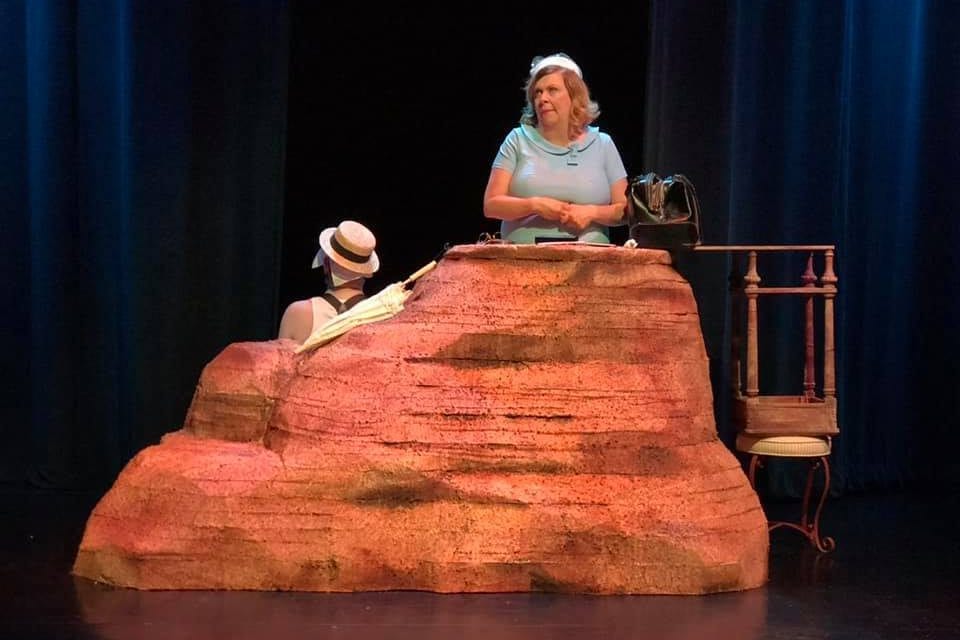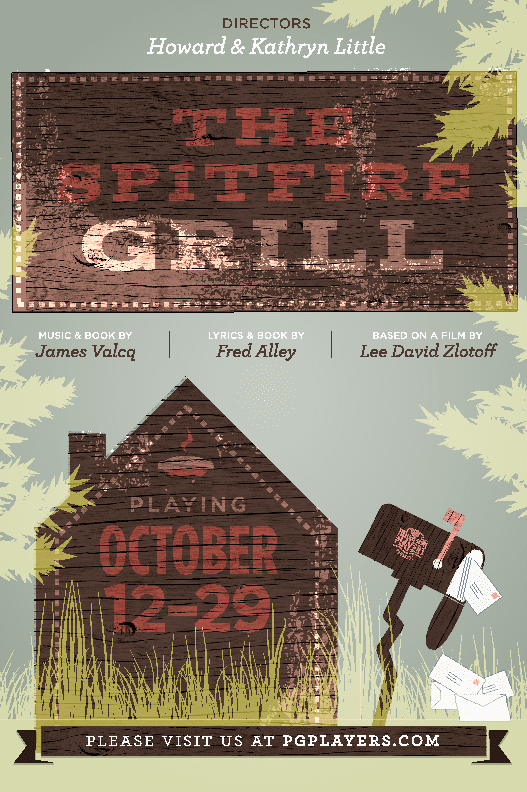SALT LAKE CITY — The alarm sounds on Samuel Beckett’s Happy Days. Winnie’s head pops up with such speed I worry that she will get whiplash. A smile is plastered on her face. She exudes the energy of an aunt who is concerningly overzealous about life, running up to hug relatives at every family gathering. But Winnie can’t run. Winnie is waist deep in a mound of rock.

Show closes September 21, 2019.
“Another heavenly day,” Winnie (played by Colleen Baum) says, thankful for the possibilities that abound her while confined within the earth. For almost the entirety of the 90 minute show, Winnie is alone and left to her own resources, speaking whatever thought enters her mind. After much calling, she is joined by her partner, Willie (played by Mark Fossen), who slumps against the backside of the rock, almost invisible to the audience. He offers few words, but Winnie talks on comforted by his presence.
With little mobility, Winnie occupies herself with distractions within reach. She pulls out items from the black bag beside her to marvel at, like a gun that she places carefully beside her. Winnie does a wide array of tasks any of us might do in our private time—like struggling to remember quotes, singing, brushing her teeth, and filing her nails—but when Winnie does these tasks they are all she has and all she does. Instead of getting bored or going through the motions, she revels in these small acts that she has probably done hundreds of times before.
In act two, Winnie is now buried up to her neck. Bereft of her arms, she explores her facial features with the same intensity but her joyful persona begins to become manic.
This production by Sting & Honey, directed by Javen Tanner, requires concentration, but is a harrowing tale for audience members who are willing to give it their undivided attention. Baum does not patronize Winnie’s simple pleasures. She makes Winnie into someone not to be laughed at, but instead empathized with as she is shown passing through a full day’s worth of emotions. Winnie tries to battle off sadness: “Forgive me Willie, sorrow keeps creeping in.” She screams at the heavens and then gets distracted by her unkempt nails. She is frustrated and confused as she is unable to read the words on her toothbrush.
Baum has incredible comedic timing in this marathon of a show. But while her actions are ridiculous and absurd, like getting surprised every time she pulls a baguette out of her bag, the emotions that back them are honest and real. While I was not always able to make sense of what was happening or being said, I could understand what Winnie was feeling. Winnie’s partner, Willie, while onstage briefly, was able to leave a lasting impression as well. Only his back is seen for the first act of the play, but the precision in his movements (such as putting on his hat in the same slow manner each time) were hilarious.
The lighting (designed by Hayden Phillips), costumes (designed by Tara Lynn Tanner), and scenic design (by Javen Tanner) were simple but did the job of maintaining the focus on the main force, Baum.
Some may see Happy Days as a cautionary tale about losing one’s self in mundane, everyday tasks. But under the direction of Tanner, the focus is not on Winnie’s limitations, but her choice to be joyful and thankful in the face of other competing emotions. There are moments where she yells out of frustration or emits a wince of pain, but she always returns to her sunny, authentic demeanor. After all, everyone is occupied by their own trivial pursuits. Everyone is pulled down further into the earth with aging. But everyone can still choose how to respond to that reality.
Sting & Honey’s Happy Days is not for the faint of heart. It requires commitment to spend 90 minutes of “heavenly days” with Winnie as she sinks further and further into the ground. But it is an incredible feat of a show. I would recommend seeing Happy Days because it is where you can find comfort within the discomfort of life.

This review generously sponsored by a grant from the Salt Lake County Zoo, Arts, and Parks program.





